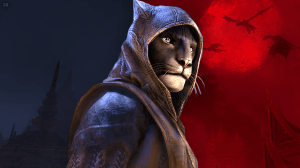Fantasy Flight’s Star Wars: Outer Rim allows you explore the galaxy far, far away as some of your favorite Star Wars characters as you try and amass enough fame to become the #1 for hire in the cosmos. The way you do that is by either smuggling, bounty hunting, or completing mercenary jobs throughout the galaxy, and every step you take can allow you to get closer to that goal if you plan wisely. In fact, the game offers a cornucopia of options to achieve victory, and that is easily its greatest strength, though you better set aside some time to truly get the most out of it.
Videos by ComicBook.com
Upon first glance, you’ll notice the ample bits and bobs that tabletop players love, and Fantasy Flight doesn’t disappoint. The board is created by combining 6 map tiles, and while the circular design does allow for you to place the cards underneath it in easy to reach fashion, the setup does take a fair bit of space and more than we were expecting, so the bigger the table the better things will feel, especially since the Player Boards take up some room as well.
Speaking of Players Boards, the production quality is stellar in Outer Rim, as each Board really immerses you in the Star Wars experience you’re taking part in. The Reputation Sliders look so slick, and having the fame and goal token areas all within it helps keep things as compact as possible. The ship cards are a bit less functional, though this lets the artwork of the ships themselves shine, and you probably won’t mind. The board itself is also quite visually appealing, and setup is relatively simple thanks to clear indicators for where things are supposed to go.

The goal of the game is to amass anywhere from 7 to 12 Fame, and this is where the game shines, as every mechanic in the game serves to forward this ultimate purpose. Whether it’s a standard job, a Bounty, Market Cards, Encounter Cards, Contacts, or Patrols, the game presents several avenues to achieve a victory that cater to any style of play. During one playthrough, we had someone scouting the universe for droids (he was playing IG-88 after all) while another was using Jyn Erso’s ability to target Imperial planets and another player was bouncing from place to place delivering cargo and completing quests, and all were gathering Fame as the game went on.
Contacts also spice things up as many times they can be brought on as your crew, which opens up your options even more, though they can also be hunted by bounties, allowing another player to hurt you in an indirect but consequential way. Patrols are also not just cannon fodder either, as you can avoid them altogether depending on how you manage your reputation with each faction, though seeking them out might net you enough credits to grab a card you so desperately need. Even the nav points between planets don’t leave you high and dry, as nav point cards will allow you to at least fulfill a job or task to make your way towards the all-important fame.

Player turns go relatively quickly, separated into a Planning Step, an Action Step, and an Encounter Step, though your first few turns will probably take some time simply due to the myriad of options you have in each one (you can peruse the full rules here). For instance, your Planning Step means you can either Move, Recover Damage or Gain 2,000 Credits, and that’s before you even get to your Action Step. This gives the game a slight learning curve, but honestly, our players were grasping onto most of the options after the first turn or so, so the curve isn’t that steep at all for a game includes many layers.
Once you get going the game moves at a steady pace, and you really get into a rhythm of bouncing back and forth between tasks to get the most out of your crew and abilities. Other players taking finite resources or contacts also means you have to adapt and tweak your methods along the way, so you’re not just doing the same thing over and over each turn.

That sounds great, right? Well, it is, though that brings us to the main point of contention with Star Wars: Outer Rim, which is the time factor. The game lists a game can go from 2 to 3 hours, but that wasn’t our experience. The book recommends for a short game to move the fame level down to 8 (as opposed to a standard game of 10), but in about 4 hours we had only managed to get to 4 a piece. Now, even if you take out about 30 minutes to an hour of not quite understanding certain things or playing something a wrong way, that’s still 3 hours and only halfway through a short game. Once you learn things the turns move much quicker, but I’d estimate a game would take 3 hours at a minimum, so just make sure you’ve got some time to play if you decide to break the game out of the box.

Thing is, it is well worth the time investment, even if you aren’t a Star Wars fan. The gameplay is engaging throughout out and crisp, and every mechanic feeds the others so seamlessly that you’ll be wheeling and dealing in no time and having a blast doing so. If you are a Star Wars fan however, you’ll find even more to love, and another opportunity to play Star Wars: Outer Rim likely couldn’t happen soon enough.
Rating: 4 out of 5
Published by Fantasy Flight Games
Designed by Corey Konieczka with Tony Fanchi








